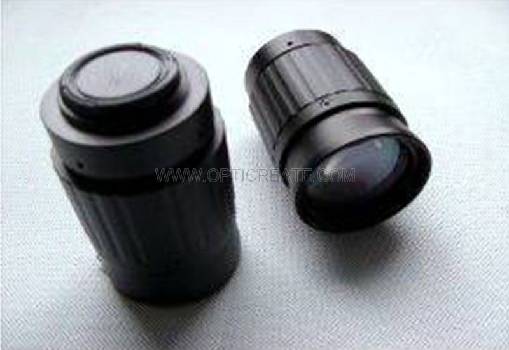Optical Lens is generally called camera lens or photographic lens, lens for short, its function is optical imaging. The lens is an important component in the machine vision system and has a key role in imaging quality. It has an impact on several of the most important indicators of imaging quality, including: resolution, contrast, depth of field and various aberrations.
There are not only a wide variety of lenses, but also great differences in quality. However, general users often do not pay enough attention to the selection of lenses when designing systems, which leads to failure to obtain ideal images and even failure of system development. The purpose of this article is to summarize the relationship between various factors through the classification and main parameters of various common lenses, so that readers can master the lens selection skills in the machine vision system.
The photographic lens is installed at the front end of a large telescopic camera lens, and a large frosted glass is installed at the rear end of the camera camera. When the lens aperture is opened to the maximum and focusing on an infinitely distant object, the images displayed on the frosted glass are all located in a circular area, while the outside of the circle is pitch black and no image. This circular area with an image is called the largest image field of the lens. In the center of this maximum image field, there is an area that can make the scene at infinity a clear image. This area is called the clear image field. The target surface of a camera or video camera is generally within the clear image field, and this limited range is called the effective image field. Since the target size of the camera used in the vision system has various models, when choosing a lens, it must be noted that the effective image field of the lens should be greater than or equal to the target size of the camera, otherwise the corners of the image will be blurred or even no image .

Ultraviolet Lens
According to whether the focal length can be adjusted, it can be divided into two categories: fixed focal length lens and zoom lens. According to the length of the focal length, fixed focal length lenses can be divided into four categories: fisheye lens, short focal lens, Standard Lens, and telephoto lens. It should be noted that the length division of the focal length is not based on the absolute value of the focal length, but the size of the image angle as the main criterion. Therefore, when the size of the target surface is not equal, the focal length of the standard lens is also different. There is a zoom ring on the zoom lens. Adjusting this ring can make the focal length of the lens flexibly change within a predetermined range. The ratio of the longest focal length to the shortest focal length of a zoom lens is called the zoom magnification of the lens. The zoom lens can be divided into two categories: manual zoom and electric zoom.
Since the zoom lens can continuously change the focal length value, it is very convenient to use when the field of view needs to be changed frequently, so it is widely used in the field of photography. However, due to the large number of lens elements and complex structure of the zoom lens, the maximum relative aperture cannot be too large, resulting in lower image brightness and poor image quality. At the same time, it is difficult to design various focal lengths and various adjustments. The focal distance is corrected for aberrations, so its image quality cannot be compared with a fixed focal length lens of the same grade.
There are many different types of interfaces between the lens and the camera. Commonly used industrial cameras include C interface, CS interface, F interface, V interface, T2 interface, Leica interface, M42 interface, M50 interface, etc. The different interface types have nothing to do with the performance and quality of the lens, but the interface method is different. Generally, you can find the interface between various common interfaces.
Microscope lens generally refers to a shooting system with an imaging ratio greater than 10:1. However, since the pixel size of current cameras is within 3 microns, a microscope lens is generally used when the imaging ratio is greater than 2:1.
A macro lens generally refers to a specially designed lens with an imaging ratio of 2:1 to 1:4. In the case that the image quality is not very demanding, generally, the method of adding a close-up ring between the lens and the camera or a method of adding a close-up lens in front of the lens can achieve the effect of zooming in and imaging.
The telecentric lens is a lens specially designed to correct the parallax of the traditional lens. It can be within a certain object distance range, so that the image magnification will not change with the change of the object distance. This pair of objects is not available. The situation on the same surface is a very important application.
Ultraviolet Lens and infrared lens, the general lens is designed for use in the visible light range. Due to the different refractive index of the same optical system for light of different wavelengths, the light of different wavelengths from the same point cannot be converged into one point when imaging, resulting in chromatic aberration . The achromatic design of commonly used lenses is also aimed at the visible light range. Ultraviolet lenses and infrared lenses are lenses designed specifically for ultraviolet and infrared.
Copyright:@2020-2021
Comments Please sign in or sign up to post.
0
0 of 500 characters used